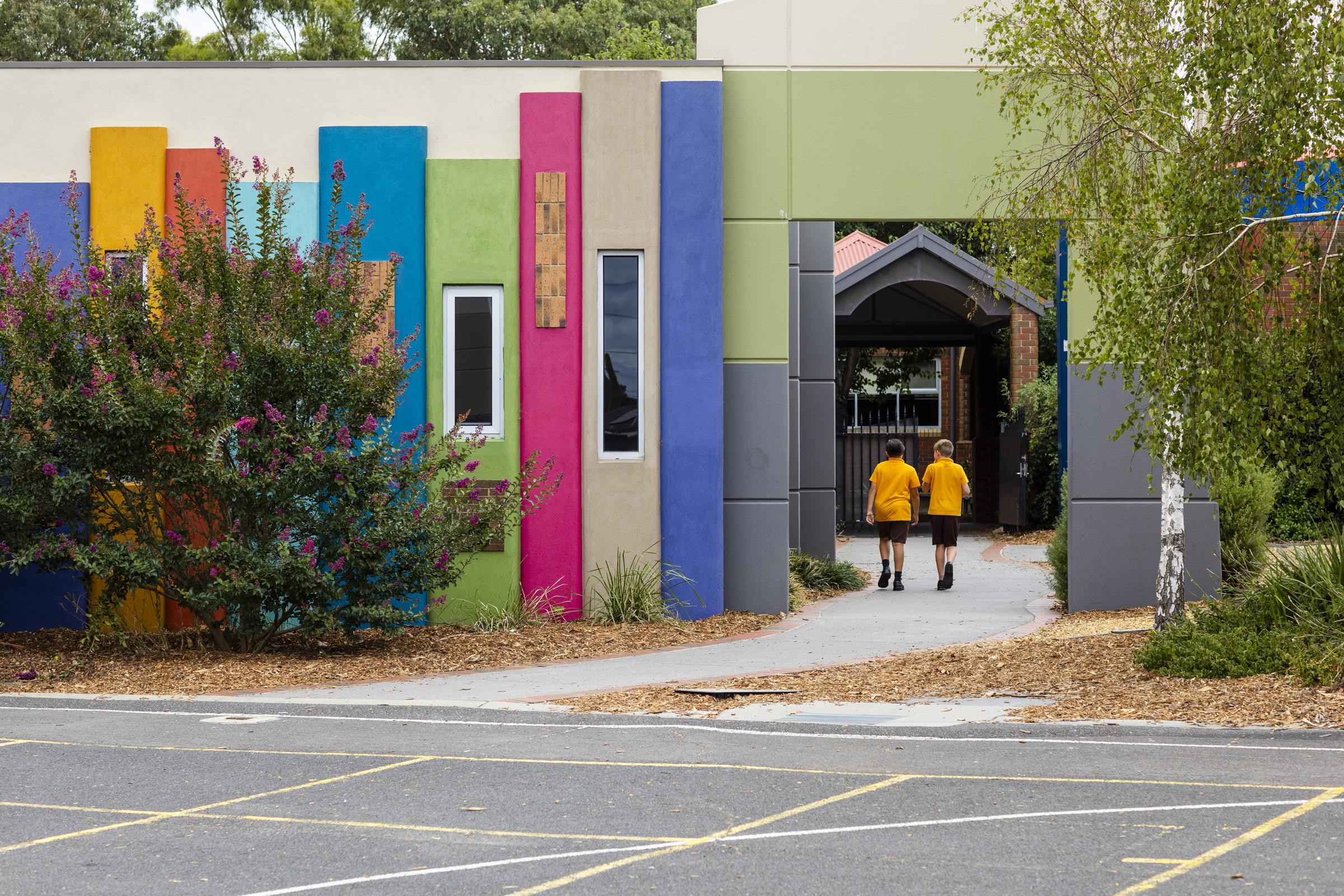WELLBEING
connie.bof@sjwreservoirnth.catholic.edu.au

WELLBEING
connie.bof@sjwreservoirnth.catholic.edu.au
When our kids feel anxious they come to us for help. Help to stop the worrying thoughts spinning around their head, help to get rid of the feeling of dread that wells up inside their tummy and help to feel safe, calm and happy. We want so much to be able to do that for them. They turn to us because they know how much we love them, and they trust us (all-knowing beings) to do and say all the ‘right’ things. But what are the right things to do and say?
While there’s no such thing as the perfect script for parenting anxious kids there are things we can do to make a powerful difference to how they feel. These ideas will help you to help your kids feel understood, valued and empowered to manage their anxiety.
1. Empathy first, always
When they’re feeling anxious, the very first thing kids need to know is that we get it. That we understand how they feel. When we show empathy, anxious kids feel validated. Different to sympathy, where they know you care about their suffering, empathy shows you feel their suffering, that you know what it feels like to experience fear, anxiety and worry.
If you stay calm, cool as a cucumber, not showing any emotion, this is actually a sign to anxious kids that you don’t get it. This can lead to them turning up the dial on their emotions and behaviour so you eventually do get it. You don’t have to agree with their reaction or what they’re saying, but a powerful first response to anxiety is to validate how they’re feeling.
2. The antidote to mental time travel
When kids start thinking about the ‘if onlys’ and ‘what ifs’ they’re engaging in something us humans are all too good at. Mental time travel. And usually not in a good way. Helping bring their attention to the present moment using mindfulness can help down-regulate their emotional response. A really effective way to do this is to help your child, no matter what age, tune into their senses. Ask them to name 5 things they can see, 4 things they can hear, 3 things they can touch and so on. Bringing their attention back to the here and now is an incredibly powerful thing to do when anxiety shows up.
3. Press the button
Anxious thinking can have our kids endlessly ruminating over thoughts and fears. As we teach them to tune into what they’re thinking, we can teach them that they don’t have to believe everything they think. Thoughts are just a bunch of words, like the ones on this page. It’s how we they to their thoughts that hurts them. A fun way of helping younger kids see their thoughts for what they are is the ‘Press the button’ technique. I use this with our 7 year old. Let’s say she’s thinking “A scary clown is going to chase me” in her dream when she falls asleep. That’s her thought. Now it’s time to press the button. The ‘button’ is actually my nose. And when she presses it I say her thought in the most ridiculous voice I can muster. She laughs her head off. Then she does the same. I press her nose and she repeats the thought in an even sillier voice! We both crack up laughing. We keep going back and forth using silly voices. It takes all the sting out of the thought, and helps remind her that it’s just a thought, not a fact.
4. Ahhhh Statements
Ahhhh statements are a brilliant way to validate how your child is feeling and to remind them that their thoughts are not facts. Repeating back what you’re hearing about how they’re feeling shows you’re listening and trying to understand. It’s also a great way to help your child’s develop a more nuanced emotional vocabulary.
“Ahhhh, you’re feeling anxious right now…”
“Ahhhh, you’re having one of those ‘I might mess it up’ ideas…”
“Ahhhh, you’re feeling disappointed that didn’t work out for you…”
5. Thought bubbles
Helping our kids to notice their thinking is such an important skill. We all have this kind of mental chatter constantly going on in our minds. When our kids are caught up in a thought it can be extremely worrying and anxiety provoking. A bit like getting swept down a river. But when we can get our kids ‘out of the river’ and start ‘watching from the riverbank’, it’s far easier for them to see their thoughts for what they are. You can ask younger kids what their ‘thought bubble’ is saying, and liken it to what they see when they read a comic. You can ask older kids to start paying attention to the thoughts that come and go in their minds. This really helps kids get some distance between themselves and their thinking.
6. Is it helpful?
Let’s say your child come’s home and tells you “I’m terrible at maths”. Instead of trying to dispute this by saying “of course you’re not”, “you’re being too hard on yourself”, “remember last year when you won the ‘mathematician of the month’ award”, try asking your child if what he/she said is helpful. It’s a simple but powerful question. They’ll say “no” which opens up a conversation to discuss what would be helpful. Maybe more support, perhaps a chat with the teacher, more time spent practicing or possibly even a tutor. It will help your child calm down and develop a growth mindset, with an understanding that ability isn’t fixed, and that effort and persistence will move them forward, no matter how stuck they feel.


Dr Jodi Richardson helps people to reduce their anxiety, strengthen their wellbeing, live by their personal values and achieve resilience and lasting happiness. Her research-based advice is grounded in a career of extensive university studies, clinical practice, education and endless compassion. Jodi is the co-author of the highly acclaimed book Anxious Kids. Her latest release is Anxious Mums: How mums can turn their anxiety into strength. For further details visit www.drjodirichardson.com.au